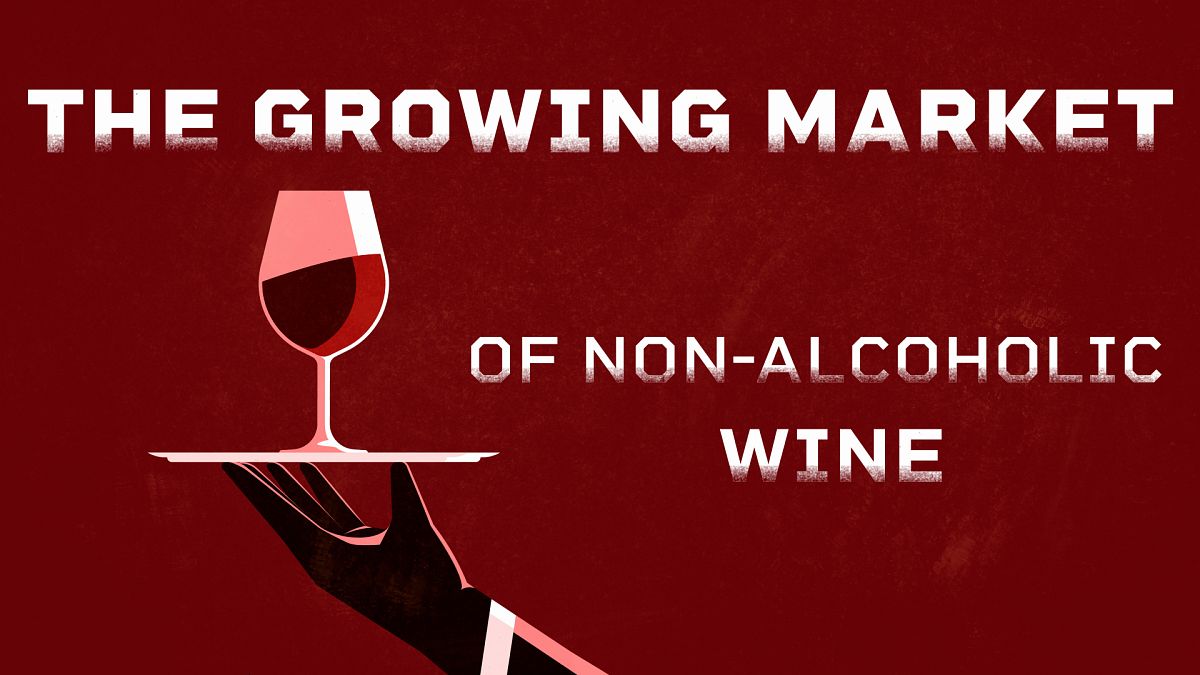Europe
Non-alcoholic wines seen as key to reviving Europe’s declining wine industry

The Decline in Wine Consumption: A Challenge for European Producers
Wine has long been an integral part of Europe’s cultural identity, with its rich history and tradition deeply rooted in the continent’s heritage. However, in recent years, the wine industry has faced a significant challenge: declining consumption. European Union (EU) citizens, who account for roughly half of global wine consumption, drank 107 million hectoliters of wine in 2023. Yet, this number has been steadily decreasing over the past decade. Between 2010 and 2020, EU wine consumption dropped by nearly a quarter, and this downward trend is expected to continue, albeit at a slower pace.
The reasons behind this decline are multifaceted. Health concerns and shifting drinking patterns, particularly among younger generations, have played a significant role. Many consumers, especially Millennials and Gen Z, are opting for healthier lifestyles and reducing their alcohol intake. This cultural shift has led to a growing demand for low- and non-alcoholic alternatives, presenting both a challenge and an opportunity for the European wine industry.
Embracing Change: The Rise of Low- and Non-Alcoholic Wines
In response to these trends, experts are urging European wine producers to expand their offerings to include low- and non-alcoholic wines. This emerging market segment has shown promising growth and could help reverse the economic downturn faced by the industry. A reflection group established by the EU Commission in 2023 highlighted the importance of adapting to changing consumer preferences and environmental challenges, such as extreme weather conditions and climate change. Gerardo Fortuna, a journalist covering the industry, notes that the group’s recommendations are critical for the sector’s survival and success.
The data supporting this shift is compelling. The global market for non-alcoholic wine is projected to grow from approximately €8 billion in 2023 to €14 billion by 2031, representing an annual growth rate of over 10%. Key markets driving this growth include the United States, Canada, Australia, and India, where health-conscious consumers are increasingly seeking alternatives to traditional alcoholic beverages. For European producers, this presents a lucrative opportunity to diversify their portfolios and tap into a rapidly expanding market.
A Cultural Shift: Europe’s Wine Industry Adapts to New Realities
Historically, European wine producers have been hesitant to embrace non-alcoholic wines, often viewing them as a departure from tradition.However, attitudes are beginning to change. Eric Sargiacomo, vice chairman of the European Parliament’s Agriculture Committee, acknowledges that balancing traditional interests with modern opportunities is a challenge. Nevertheless, he believes the industry is well-positioned to succeed in this new landscape.
The transition is not without its difficulties. Many producers are grappling with the idea of moving away from centuries-old practices to cater to a younger, more health-conscious demographic. However, the potential benefits far outweigh the costs. Non-alcoholic wines offer a flavorful and healthier alternative for those who want to enjoy the taste and social aspects of wine without the alcohol. Moreover, this shift aligns with broader consumer trends toward sustainability and wellness, making it a smart business move for European winemakers.
The Economic Potential of Low- and Non-Alcoholic Wines
The economic implications of embracing low- and non-alcoholic wines are significant. As international trade faces challenges, including geopolitical tensions and fluctuating markets, the European wine industry must look inward and outward for growth opportunities. While domestic consumption continues to decline, the global demand for non-alcoholic wines provides a promising avenue for expansion.
European producers are uniquely positioned to capitalize on this trend. With their reputation for quality and craftsmanship, they can differentiate themselves in the non-alcoholic wine market, which is currently dominated by smaller, niche brands. By leveraging their expertise and investing in innovation, European winemakers can create products that appeal to both traditional wine drinkers and those seeking alternatives.
Overcoming Tradition: The Path to Future Success
Change is never easy, especially when it involves breaking away from long-standing traditions. For European wine producers, the shift toward low- and non-alcoholic wines requires a cultural and operational transformation. However, the rewards are well worth the effort. Non-alcoholic wines are not only a healthier option for consumers but also a way to attract new customers who might otherwise avoid alcoholic beverages.
The key to success lies in embracing innovation while respecting the heritage of European winemaking. Producers must invest in research and development to create high-quality, flavorful non-alcoholic wines that meet the expectations of discerning consumers. Additionally, marketing strategies will need to evolve to appeal to younger, more health-conscious audiences, who are driving the demand for these products.
Conclusion: A New Chapter for European Wine
The European wine industry stands at a crossroads. Declining consumption and changing consumer preferences present significant challenges, but they also offer an opportunity to innovate and grow. By embracing the rising demand for low- and non-alcoholic wines, European producers can not only reverse the economic downturn but also secure a place in the future of the global wine market.
It will require courage and adaptability to venture into uncharted territory, but the potential rewards are immense. For European winemakers, this is not just about survival—it’s about thriving in a rapidly changing world. As the industry moves forward


















